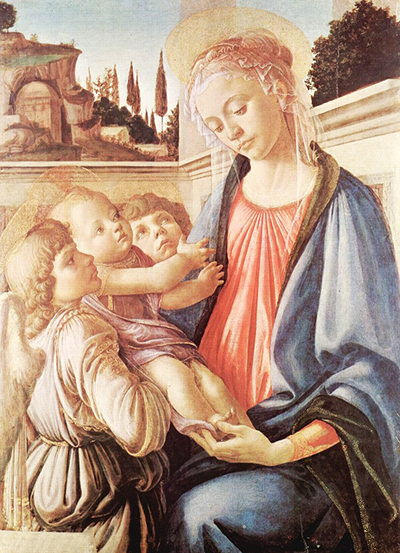The Madonna and Child with Two Angels is a key fresco from around 1468-1470 by Italian Early Renaissance master, Sandro Botticelli
Initially, as with many artworks from this Early Renaissance era, there was some disagreement over whose hand was responsible for it. Some attributed it to Botticelli's teacher, Filippo Lippi. This tempera on panel stands at 100cm x 71cm and bears resemblances to several other famous paintings, both in composition and also certain specfic elements of the depiction.
Fortitude, for example, bears similar facial finishes whilst Verrocchio's Madonna of the Milk, from just a few years earlier, is laid out in much the same way. During the various stages of the Renaissance there are always going to be clear crossover between paintings, with many artists learning from each other and also taking on similar themes. There were also not the range of artistic styles at that time compared to the modern day.
The original artwork is now in the Museo Nazionale di Capodimonte, Naples, Italy. This art institution holds a fine collection of Renaissance art including Misanthrope by Pieter Bruegel the Elder, Ercole at the Crossroads by Annibale Carracci plus a selection of works by Titian, Masaccio and Giovanni Bellini. Furthermore, many other mediums are also represented including huge tapestries and also some Raphael drawings.
In this scene two angels lift the child to the Madonna. Her own facial expression is of contemplation as she starts to play with the child. This leaves an overwhelming feeling that there is more to this artwork than just what we see with our own eyes, perhaps the unseen influence of God or some other powerful force.
There is a symbolic meaning to the background which many viewers could potentially overlook. There is an allusion to the Hortus Conclusus, meaning Enclosed Garden. This touch points to the virginity of Mary and underlines how Botticelli would consider every area of his panel in order to maximise the symbolic impact of each painting.




